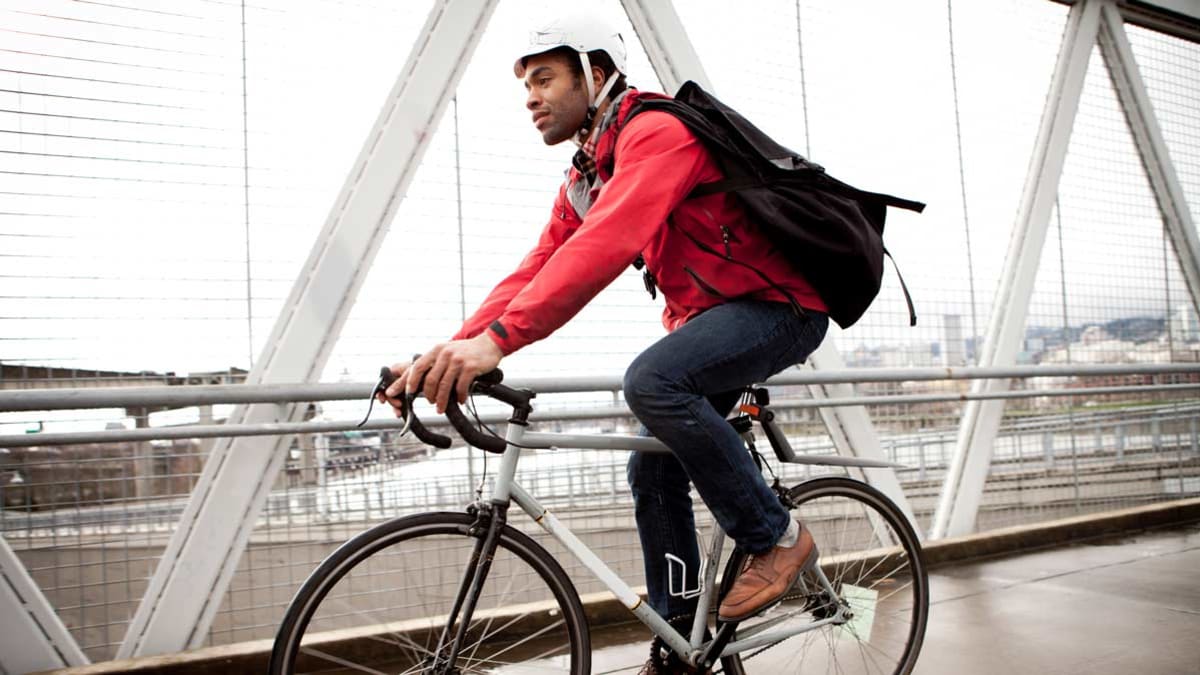Keep in mind that safety doesn’t just mean protective equipment; it’s also about how cyclists interact with motorists, pedestrians, and other cyclists.
Obey the law. The League of American Bicyclists reminds riders, “You have the same rights and responsibilities as drivers.” This means that cyclists have to follow all traffic laws and obey street signs, signals, and road markings. Ride in the same direction as traffic when cycling on roadways. Running stop signs and other traffic control devices puts you and other cyclists, pedestrians, and motorists in danger. (See the league’s guide to the rules of the road.)
Stay alert. Remember that potholes, bottles, glass, curbs, and sewer grates pose a bigger risk to cyclists than they do to cars. Keep your eyes up and look far enough ahead of you to make an evasive maneuver or stop in time to avoid a crash. Anticipate that someone may open their parked car door when you’re riding past.
Use hand signals. The only way cyclists can interact with traffic is by using hand signals. Both the National Highway Traffic Safety Administration and the League of American Bicyclists say that it’s the law to use proper hand signals and that doing so communicates your intentions to turn or stop, making it safer for everyone.
Be predictable. While it’s necessary to avoid obstacles, don’t weave in your travel lane. Inattentive riding and random movements can confuse or unnerve drivers. They may slow down and avoid passing you because they don’t know what you’re doing. Or they may aggressively pass, putting themselves, you, and others at risk.
If you do have to avoid an obstacle like a pothole or debris, use a hand signal—if possible—to alert following vehicles that you may have to enter their travel lane.
Ride single file. Stay single file no matter where you’re riding. This allows traffic to give you 3 feet of space when passing without having to veer into the oncoming lane and lets other cyclists pass you safely on the road. If it’s legal to ride on the sidewalk in your town or city, keep in mind that riding two or three abreast on the sidewalk crowds out pedestrians.
Skip the tech. Whether you’re commuting or interval training, keep off your phone. Headphones and earbuds hinder the ability to hear traffic, and they can become a distraction if you need to take a hand off the handlebars to change the volume, choose another song, or accept/reject a call on your phone. And just like driving, texting is a major distraction. One slight wobble and even the most experienced cyclist will go down in a heap. You can attach a small saddlebag under the seat or to the frame to stash a phone. This not only keeps it from being a distraction but also prevents you from accidentally dropping the phone. If you insist on listening to music while riding, consider a bone conduction model. These headphones don’t muffle external noise.
Be aware of your speed. It’s important for riders who have moved to an electric bicycle (e-bike) to be aware of their speed. Some models can easily travel at 20 mph or more, speeds that would be hard for a new cyclist to achieve when pedaling a conventional bicycle. This adds another level of risk to the equation. Higher speeds mean the rider has less time to slow down or stop. The results of even low-speed crashes—especially when cars and trucks are involved—can be painful and even fatal. A 2024 study by The Journal of the American Medical Association (JAMA) found that e-bike injuries increased by more than 99 percent annually between 2017 and 2022, from 8,566 to 56,847.
Source link
